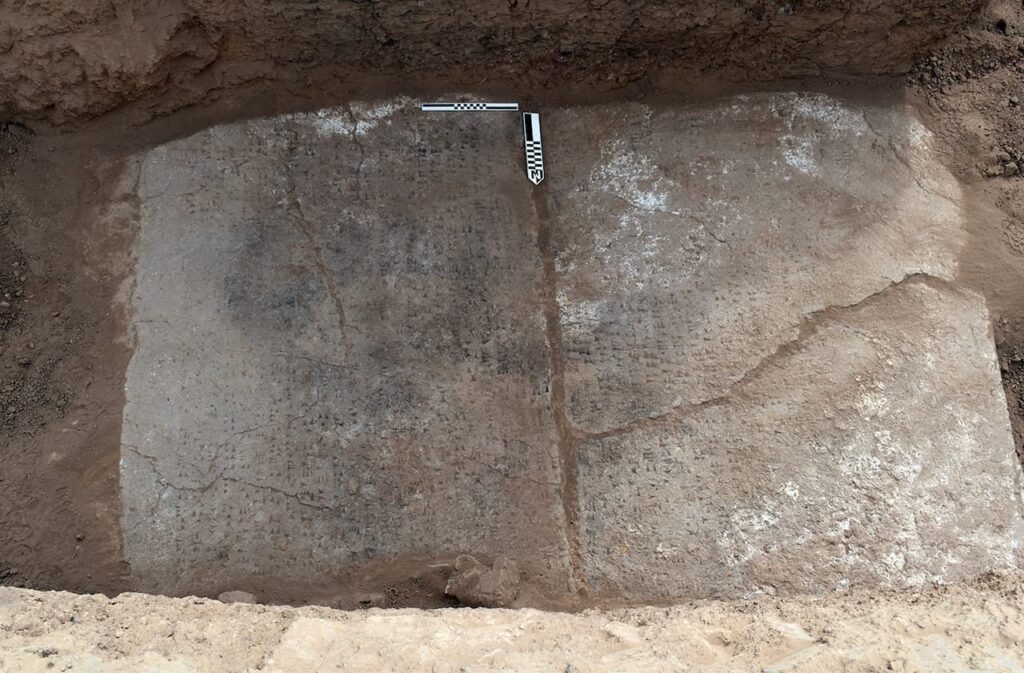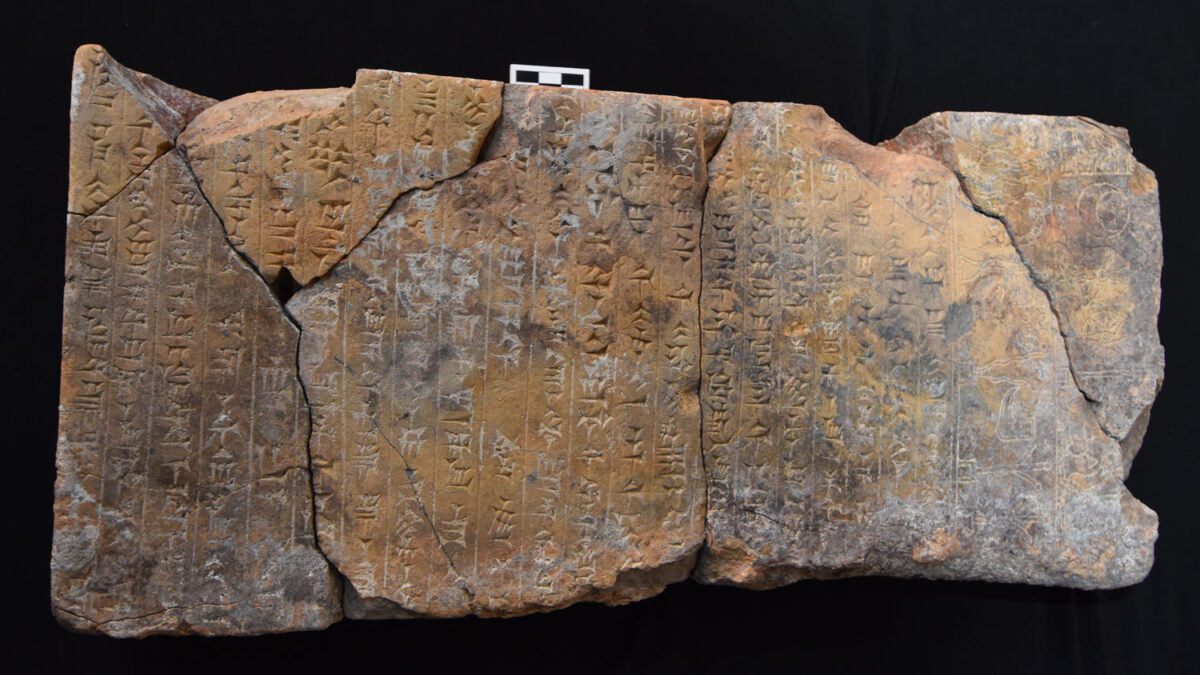Archaeologists from the University of Pennsylvania, together with Iraqi colleagues, carried out excavations in the northern Iraqi city of Nimrud. Here they managed to find well-preserved artefacts left at the site of the great Assyrian temple of Ninurta, which was burned down about 2,600 years ago. Here are the details…
Assyrian artefacts hidden under the ashes revealed!
Nimrud was the capital of the Neo-Assyrian state under King Ashurnasirpal II. It is considered a very important place in terms of preserving the history of an ancient civilisation. The temple of Ninurta was built in honour of the Assyrian god of war and agriculture. The fire that destroyed the temple is thought to have occurred around 613 BC. However, some artefacts were saved from looting as they remained under the ruins.

During a new series of excavations, scientists discovered two interesting elements. One of them was a huge stone pedestal that served as a platform for a large statue of a deity. Cuneiform messages of King Ashurnasirpal II were found on it.
Another was found in a smaller hall. Archaeologists also found fragments of unidentified statues of gods that were destroyed when the temple was captured. It was reportedly burnt by invaders from Babylon to the south and Midia to the east. All indications are that the building was looted and deliberately destroyed before it was set on fire.
The findings reveal the key role of the Ninurta Temple in the religious and cultural life of the Assyrian capital. The fact that it did not lose its splendour even after looting and fire gives it a special importance. The artefacts found here show how large-scale the structures inside were. Archaeologists are trying to reconstruct the relationship between the Assyrian gods and their perception by the local population.

















